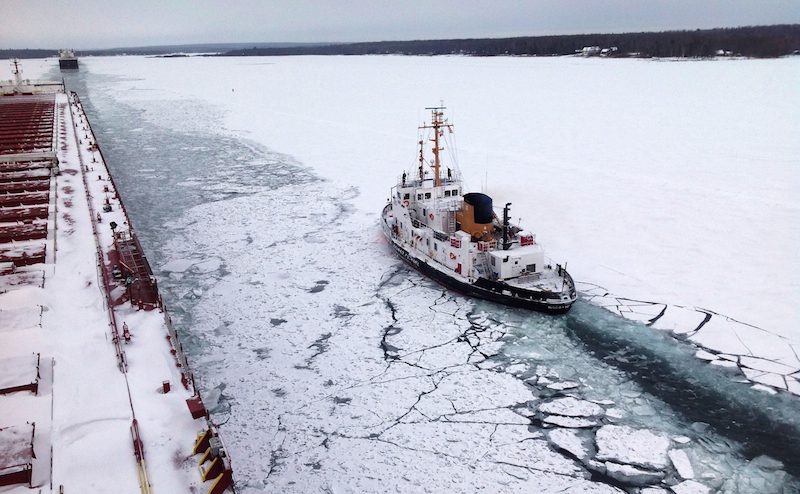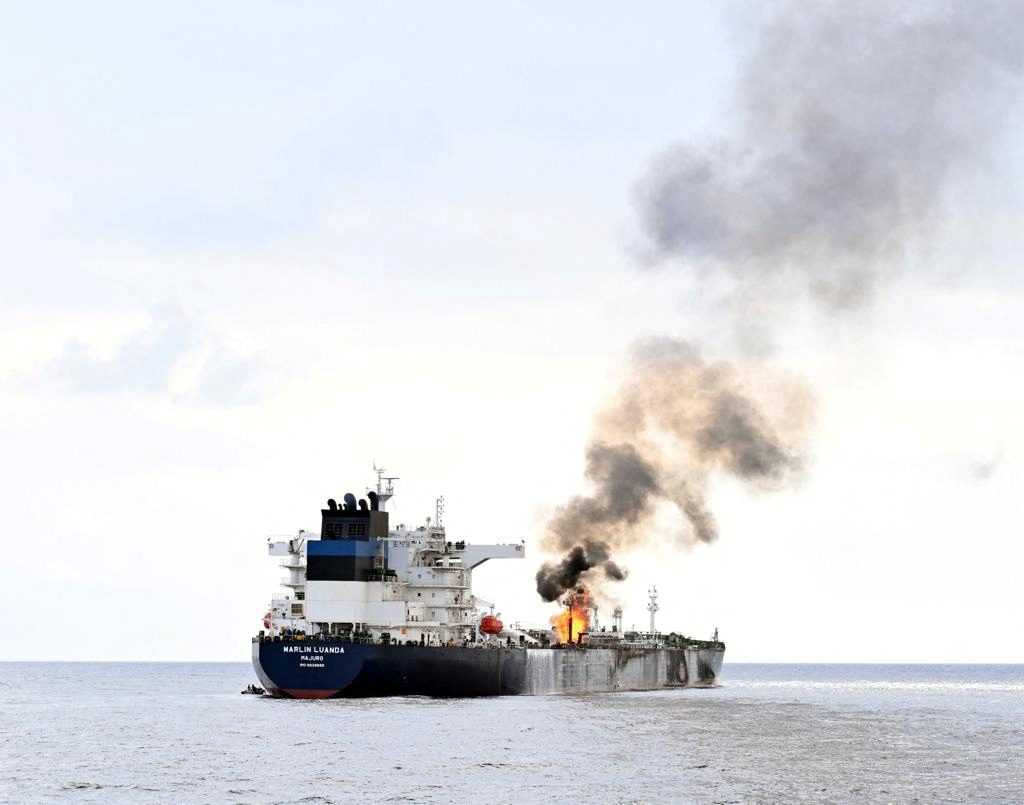The crew of Coast Guard Cutter Biscayne Bay breaks ice in the St. Marys River in the vicinity of the motor vessel Paul R. Tregurtha as the Tregurtha transits upbound the river, Dec. 15, 2013. U.S. Coast Guard Photo
Shipments of iron ore on the Great Lakes totaled 58.3 million tons in 2013, a decrease of 5.3 percent compared to 2012, according to new data released today by the Lake Carriers’ Association.
While the trade had been slightly behind 2012’s pace through November, the gap grew significantly when an early and harsh start to winter caused weather-related delays at loadings docks and vessels were either slowed by or beset in heavy ice.
In December, winter weather limited shipments to 5.1 million tons, a decrease of 20 percent compared to a year ago.
RELATED: Polar Vortex Grips Great Lakes Shipping – Photos
Shipments from U.S. Great Lakes ports totaled 51.8 million tons in 2013, a decrease of 3.5 percent compared to a year ago. Again, December loadings were almost 20 below the level of a year ago.
Another factor affecting shipments from Lake Superior ports was a voluntary reduction in loaded drafts toward the end of the month to facilitate transits of an ice-clogged stretch of the St. Marys River, the Lake Carriers’ Association said. Some companies reduced loaded drafts by more than a foot between Christmas and New Year’s. For a 1,000-foot-long vessel, that reduced draft translated into 4,000 tons of taconite pellets left at the loading dock.
Meanwhile, shipments from Canadian ports to Great Lakes destinations totaled 6.5 million tons in 2013, a decrease of 18.2 percent compared to 2012. Heavy ice developed in the Seaway and that segment of the iron ore trade was down nearly 27 percent in December.
The Lake Carriers’ Association represents a total of 17 American companies that operate 57 U.S.-flag vessels on the Great Lakes, carrying raw materials such as iron ore and fluxstone for the steel industry, aggregate and cement for the construction industry, coal for power generation, as well as salt, sand and grain. Collectively, these vessels can transport more than 115 million tons of cargo per year.
Unlock Exclusive Insights Today!
Join the gCaptain Club for curated content, insider opinions, and vibrant community discussions.

 Join The Club
Join The Club













